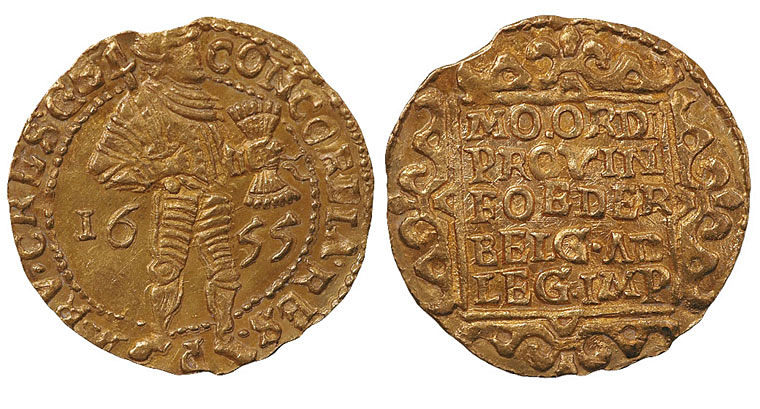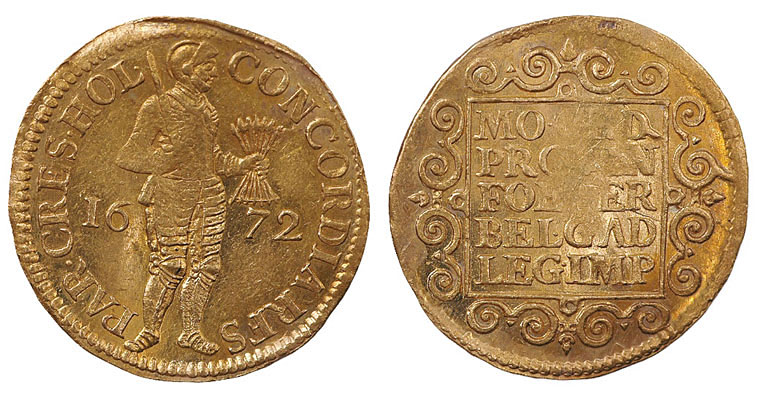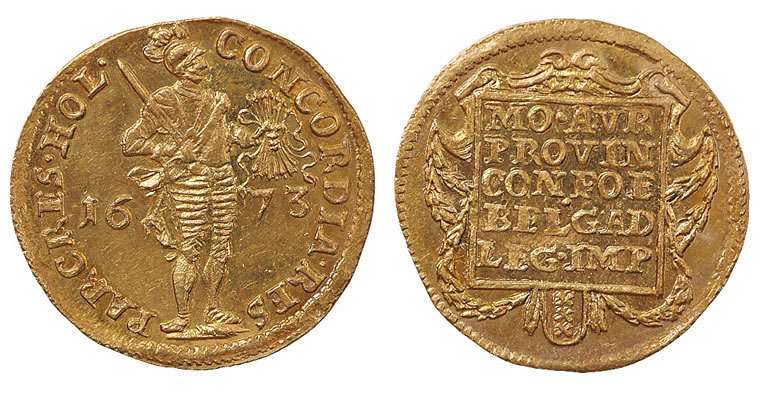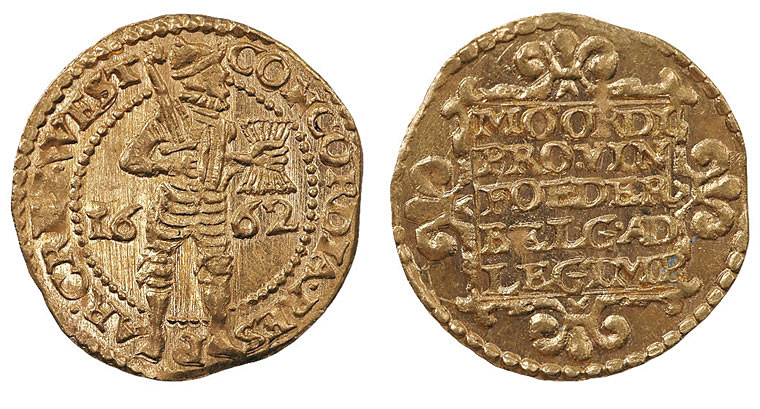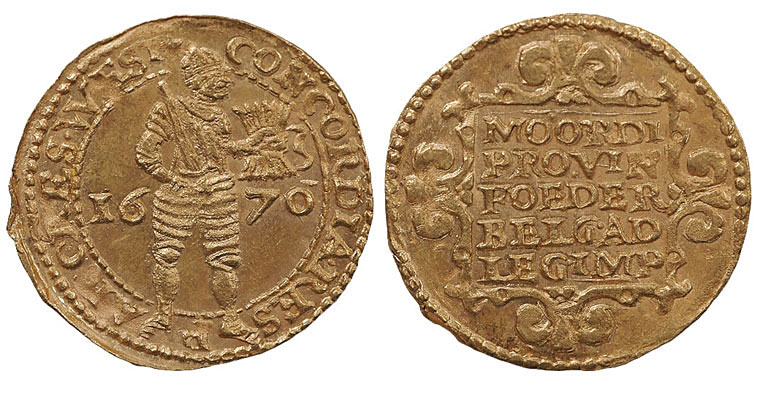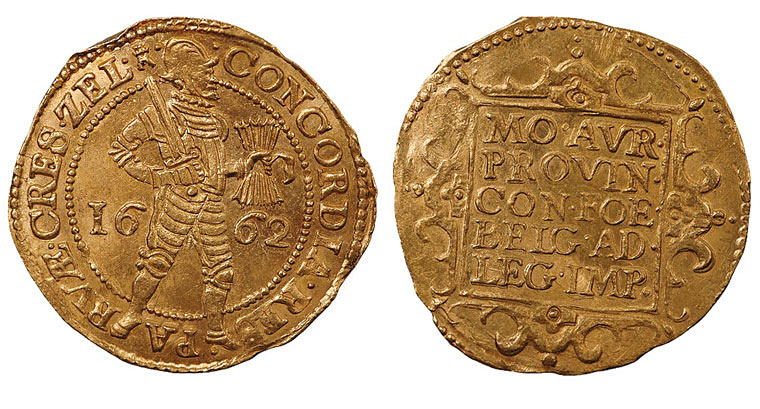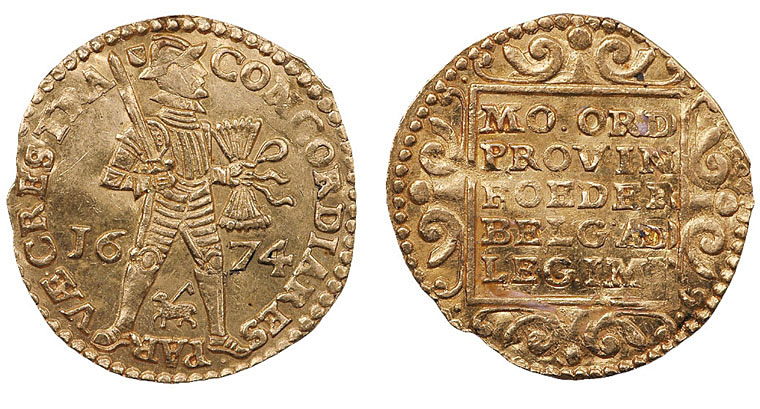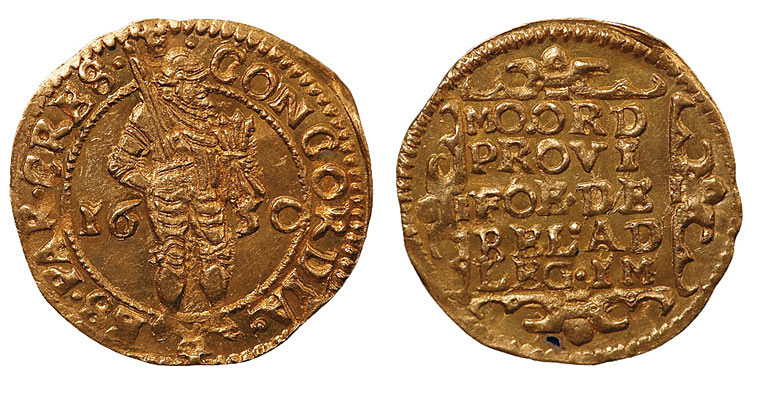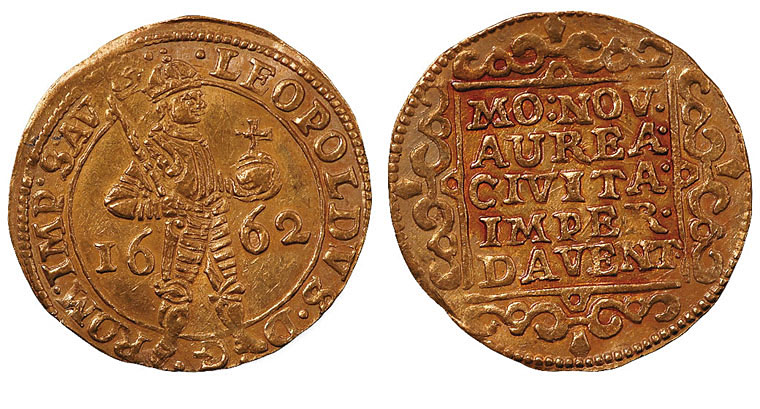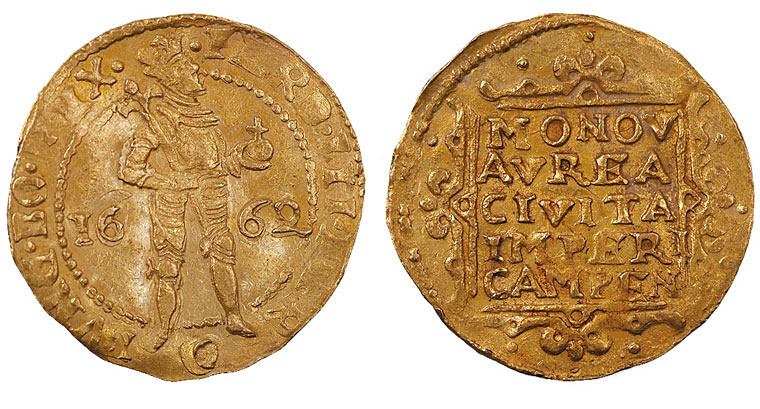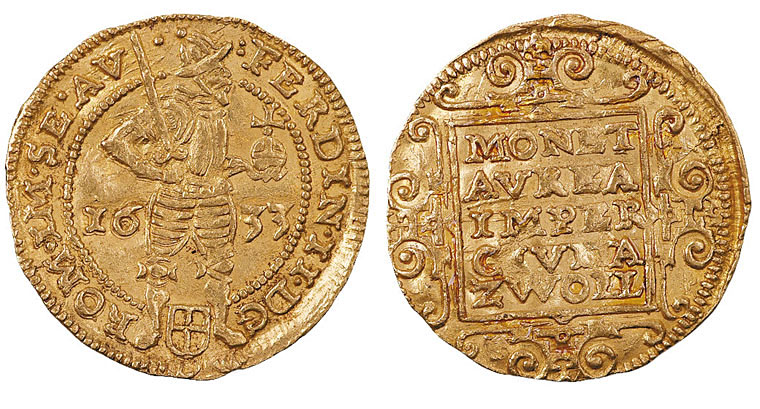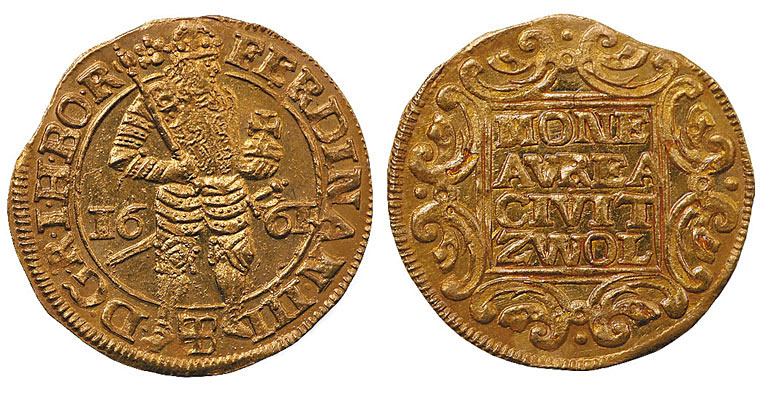With the edict of Leicester, dated October 4, 1586, gold ducats of the Dutch type were introduced. They were supposed to be minted from .986 gold, with a weight of 3.515 gm. On the obverse they bear the knight holding a bunch of arrows in the left hand and a sword in the right hand. The legend on the rim, CONCORDIA RES PARVAE CRESCUNT (or its shortened version), usually ended with a mintmark. On the reverse the legend was written in 5 lines inside the ornamented square: MO ORDI / PROVIN / FOEDER / BELG AD / LEG IMP. The only different ducats were minted by the Imperial mints of Deventer, Kampen and Zwolle. They were minted with the picture of the Emperor and with his name in the legend on the obverse. The name of the city, where coins were minted, was written in the reverse legend.
Also, a number of gold ducats of the Hungarian and Spanish type were minted. Hungarian single ducats were minted by mints of Gelderland, Holland, West Friesland, Utrecht, Friesland, Overijssel, Kampen and Zwolle. Double and single ducats of the Spanish type were minted in provincial mints of Gelderland, West Friesland and Zeeland (only double ducats) as well as in the provincial Overijssel mint and city mints of Kampen and Zwolle (double and single ducats).
Examples of the Netherlands ducats from The Kosice Gold Treasure, minted in the provincial period.
Gold ducats were minted by provincial mints of:
- Gelderland province (in Harderwijk)
- Holland province (in Dordrecht)
- West Friesland province (in Hoorn, Enkhuizen and Medemblik)
- Zeeland province (in Middelburg)
- Utrecht province (in Utrecht city)
- Friesland province (in Leeuwarden)
- Overijssel province (in Kampen)
- and also in the Deventer, Kampen and Zwolle mints (all of them are from Overijssel province).
Ducats of the Dutch type are those with a knight holding a bunch of arrows in his hand on the obverse and a square with inscription on the reverse, minted since 1586. The number of arrows on the obverse varied at times between 3 and 8. Some of the early ducats were minted with 4 arrows though they were by design supposed to have 7 arrows (despite the fact that in the Edict from 1586 a drawing with 5 arrows is shown!). Some of the Gelderland ducats minted in 1648-1650 are known with 3 arrows. The number of 8 arrows is known on some Utrecht ducats from late 18th century, but that was probably just a die sinker’s mistake. The number of arrows on the coin, in and of itself, cannot be used to determine that the coin is a forgery.
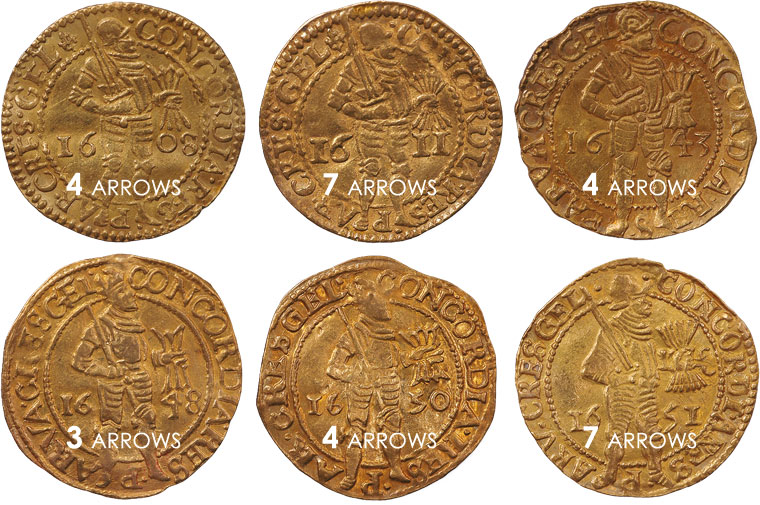
An example of the different number of arrows on Gelderland ducats. In the short period from 1643 to 1651 the number of arrows varied between 3 and 7.
Pictured ducats originate from The Kosice Gold Treasure, inv. no. 1922, 1923, 1936, 1947, 2001 and 2022.
A great collection of over 1,000 gold ducats from the provincial period is available for viewing in the Kosice Gold Treasure. You may find more about this coin find on this site: THE KOSICE GOLD TREASURE.

